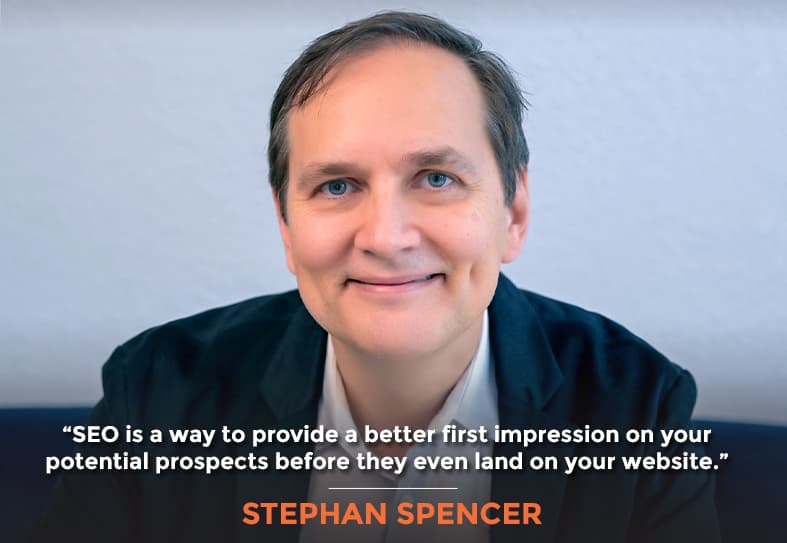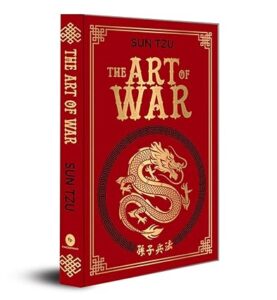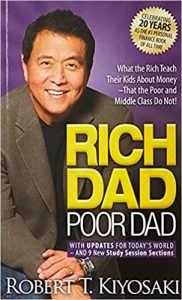The strategic mindset behind search engine optimization goes beyond mere technical adjustments. When done right, SEO becomes the curator of your first impression in Google results—the moment potential customers form opinions about you before ever visiting your website.
Kara Goldin is the founder of Hint Water and host of The Kara Goldin Show, who I was excited to welcome to my show Get Yourself Optimized a few years back.
In this conversation with Kara on her podcast, we discuss why most businesses focus too narrowly on direct competitors while ignoring the indirect players who often possess superior SEO knowledge. We explore the concept of “fishing where the fish are”—identifying high-volume search terms that capture your exact audience earlier in their journey. I share why personal branding deserves as much attention as your company brand, especially since it’s the only one you’ll take with you throughout your career.
We also examine AI’s profound impact on SEO, why tactics without strategy lead to failure, and how content publishers frequently outrank established industry brands in search results.
This conversation offers both marketers and business owners a clear path to move beyond technical SEO tricks toward strategic positioning that builds lasting digital authority. So without any further ado, on with the show!

In This Episode
- [05:50] – Stephan reveals how to curate your search results and control the first impression prospects get before they ever click.
- [09:16] – Why your real competition isn’t who you think—Stephan breaks down the indirect competitors dominating your keywords.
- [13:30] – Personal brand vs. company brand: Kara and Stephan unpack which one actually travels with you throughout your career.
- [18:19] – Stephan unveils his strategic framework for turning podcast guest appearances into powerful SEO assets.
- [27:59] – AI is transforming search forever—Stephan warns what happens if you don’t adapt and which tools to integrate now.
- [33:43] – The anatomy of viral content: Kara and Stephan decode what makes social media posts spread (and what falls flat).
- [41:38] – Stephan demonstrates the SparkToro method for discovering which hashtags your exact audience is already using.
Hi, everyone, it’s Kara Goldin from The Kara Goldin Show. I’m so excited to have Stephan Spencer here with me to talk all about SEO and his book. Overall, his journey has been so interesting. I was actually on Stephan’s podcast show a couple of months ago. I’m losing track of time. But we actually met through I call him the amazing Joe. We’ll talk about that a little bit. But let’s, let’s just talk a little bit about Stephan. He is really considered, the more I’ve dug into him, the SEO master and marketing expert, and his whole life has really been focused on not only building a company and becoming an expert, which I’d love to talk more about today.
No, he was going to become an expert in this or not. Sometimes people just set a set way on their journey. They just figure out what they’re really good at that maybe comes easily, maybe it’s challenging along the way. But then they have these aha moments, and for Stephan, he ended up co-authoring three books —one of them is all three of them, a monster, I should say. But one of them is just so incredible, the art of SEO. If you don’t remember any of the other titles, please, please go and get the art of SEO, it will be so, so useful to you.

We’ll talk a little bit more about that. But its other books are Google Power Search and Social eCommerce as well. Stephans worked with many, many amazing clients, including Zappos, Sony Store, Quicksilver, and Chanel. And very, very excited to have him talk on the show. Because I always share with people, if you are not a lifelong learner, then you’re bored. And that is so much of what Stephan talks about, which I think is really going to challenge your brain a little bit and get everybody thinking, and we can all benefit from it. So, welcome.
Thank you. The expression comes to mind when you were describing. “If you’re not learning, you’re bored. If you’re not growing, you’re dying.” That’s another expression, I think, that is very important to keep in mind. Because I’m excited for each day to come. I wake up and put my feet on the ground, and I say to myself, “Today is going to be a great day.” I learned that from BJ Fogg, whom I met through Genius Network, which is how we met. That little habit just sets me off on a wonderful start to my day. I look for opportunities to grow, learn and become better. It’s fun.
I love it—mindset attitude. There’s so much there. Let’s talk about how you get started. How did you become the SEO guru and the go-to person for SEO for so many people and brands?
Well, it was a coincidence—that kind of culminated in a shift in my path. I was studying for a PhD in biochemistry. While I was doing that, I just built some websites. This is back in 1994, when the web was brand new, and I started it that same year.
Oh, yeah. Same year as that. You know, the internet. So interesting.

We were using the Mosaic browser back then. Right?
Crazy, crazy time. And so, for those of you who are not at all like, let’s break down SEO for those people listening, that SEO is kind of this important thing that they should know about, but don’t really even know what it is.
Well, search engine optimization is a way to provide a better first impression to your potential prospect or customer, before they even land on your website. Because the most likely path they’re going to take to get to you is by typing your name or your brand or the services or products that you offer into Google. They’re going to see a set of search results. That’s their first impression. Then they click on your webpage and search results, land on your site, and get a second impression.
But you know how important the first impression is, and you’ve blown it. If you haven’t done good SEO to make sure that not only are you ranking highly in the search results for the keywords you care about, but also that all the other stuff, especially for brand results, brand SERPs, search engine results pages, for the brand results that appear, you want to curate all of it. If you search for my name, for example, Stephan Spencer, you’ll see that everything on page one is either stuff that I have written, or was written about me that I can influence or, you know, I had some involvement in it being written, or it’s just basically, appearances, TV appearances, or my author page on Amazon.
These are things that I had a hand in, rather than just leaving it to chance. It’s really important that you can curate the results. Even if, let’s say, some detractors are going after haters, hug your haters, like Jay Baer says, and the title of his book, but if you have negative stuff about you on the search results for your brand, you want to push that off onto page one. The way to do it is to have other stuff that outranks it. This is an opportunity to actually move your opponent’s chess pieces, not just your own, which is amazing.

It’s a strategic mindset shift to think, “Oh, this isn’t about tags.” This isn’t about getting links. Those are tactical elements to it. But in the book, The Art of War, Sun Tzu said, “A written plan without strategy is the noise before defeat.” If all you’re doing is trying to get all the tactics right, you’re missing the huge opportunity to implement strategies —and when your competitors implement them instead of you, you’re just in the tactics. That’s when you just get slaughtered on the battlefield.
Absolutely, and it’s not just about it; you just touched on the competitors. Especially as it relates to brands, and I think that, you know, people think, “Oh, I’ve just got to focus on getting my brand up to the high levels.” But you also have to watch what competitors are doing, because maybe they’ll actually be grabbing that search and sending it back to their site, and that’s obviously, I mean, not a good thing. As a CEO, you’re not really thinking about it, but you could be losing significant traffic.
To think about your indirect competitors at the same time as the direct competitors, because usually, the direct competitors are not nearly as clued in to SEO as the indirect competitors, and who are the indirect competitors? They are potentially affiliates—not just a view—of your competitors. They could be site owners who’re just trying to monetize their content. What used to be called back in the day, MFA sites are made for AdSense sites, where they’re just it’s just a content play. It’s a publisher that’s monetizing through Google AdSense, or other platforms, programmatic advertising, or what have you. And they could be making millions of dollars.
If all you’re doing is trying to get all the tactics right, you’re missing the huge opportunity to implement strategies —and when your competitors implement them instead of you, you’re just in the tactics.
I actually have a client who’s a seven-figure earner, making it all through ads and affiliate links. I’m not sharing anything out of school because I’ve already talked about it on my podcast, Marketing Speak. It’s Chris Parker, and the site is whatismyipaddress.com. It has like 8 million unique visitors a month. They’re in the seven figures now. That’s exciting times. But those are your competition. They’re much more savvy than your direct competitors, typically. If you’re trying to reverse engineer what your direct competitors are doing, you’re missing the big picture. You have to reverse engineer Google and what they’re doing and what they’re cooking up.
They’re implementing artificial intelligence all over the place. You have to reverse engineer these indirect competitors. Because anybody who’s outranking you in Google is a competitor for the keywords that you care about, even if they’re not direct keywords, who you are, but they’re reaching your audience. I like to say that you want to fish where the fish are, not that I go fishing or anything.
But if you want to land more fish, if you want to catch more fish, go to where the fish are. I give a quick example. Let’s say you have baby furniture in your product catalog—maybe that’s all you do, baby furniture, and so the obvious keywords are things like baby cribs and baby furniture, baby bassinet, bassinet. The problem is, they’re pretty far along in the buyer journey by then. It’s a very competitive search, it’s sure. There’s a lot of competition, and it’s difficult to rank for.
There isn’t nearly the search volume that you would expect. If, on the other hand, you go earlier into the buyer journey, up the funnel, to where people have maybe just found out from the first ultrasound that their baby is a boy or a girl. What are they going to do as soon as they get home? They’re going to hop onto Google, and what are they going to search for? It’s not baby furniture. What do you think they’re going to search for as soon as they hop onto Google?
I should know this, having four kids. But maybe a site to actually buy it.
Your personal brand is the only one you'll be taking with you throughout your career. Share on XIf you’ve just found out the baby’s name or the baby’s gender, and you’re like, “Okay, now we’ve got to figure out names.” If they’re searching for baby names, and you’re like, “Well, that’s great.” They’re gonna figure out the baby’s name. “No, no, no, there’s an opportunity here.” Suppose you’re selling baby furniture, and you go after baby names as a keyword, which has orders of magnitude more search volume compared to some of these other keywords that you were targeting.
In that case, you’re going to get almost 100% expectant parents who are searching for baby names. Nobody, the expectant parents, is your exact target audience. What you’re looking for are these opportunities, which are essentially the baby names, equivalent keywords for your industry. One of the best ways to find keyword opportunities is to reverse-engineer your indirect competitors.
If you’re trying to reverse engineer what your direct competitors are doing, you’re missing the big picture.
Very interesting. In my life, we actually knew names way before we had family names. We weren’t necessarily looking in the same way. But I’m with you. And I do believe that most people are actually looking at it. How do you think it varies? For a brand versus an individual? If you’re looking at Kara Goldin versus a company like Hint, what would you say are the key differences in the SEO journey?
Most people are neglecting their personal brand. They’re focusing on their company-run, and I was guilty of this. Back when I was building my first company, I didn’t worry about my personal brand so much; it was all about the company’s brand, neck-to-neck concepts. I realized after selling the company, like wait a second, that was a problem, because now the company has gone into other hands. I’m left with just my personal brand.
The personal brand is the only brand you take with you to the grave; companies come and go. Hopefully, you have an exit strategy, because any business that doesn’t have an exit strategy, you’ve got a very expensive job, you’re self-employed, you’re not a business owner. If you have an exit strategy for your brand, that’s great. But there is no exit strategy for your personal brand. And that’s the one that tends to get neglected.
If somebody’s searching for your personal name, think about the first impression that they’re going to get in the Google results. What does it look like? Does it just look like your LinkedIn is number one when it should be your company’s website? Your personal website should be number one. Is it that you have a knowledge panel over on the right-hand side, but it says that it’s unclaimed with a button at the bottom that says “Claim this knowledge panel, or do you not even have a knowledge panel over on the right-hand side?”

People will judge you based on that first impression. And they think, “Oh, you’re a big CEO or your big business owner or entrepreneur.” But these results don’t really reflect that. Nothing is happening over on the right-hand side. Now the person who’s searching may not even know that it’s called a knowledge panel, but that doesn’t matter. They just know something’s missing over there. They search for another CEO’s name, and boom, there are fun photos, links, ads, social Chiclets, book covers, and things like that.
Where’s that for you? And also, if they see that there’s not a lot of impressive stuff, you weren’t interviewed on CNN, or Forbes or whatever. It’s just like social platforms, or maybe even just other people’s stuff, because you have a common name, or perhaps somebody else more famous than you has the same name as you. Most of the stuff that’s showing up isn’t even you. That’s a problem. That’s you not having control over your own personal brand. Presence in Google, the number one search engine.
If you have an exit strategy for your brand, that’s great. But there is no exit strategy for your personal brand. That’s the one that tends to get neglected.
It is important to maintain this presence and brand, and to build them out over time. If you don’t even have a personal website, how are you going to really control your personal brand voice? Just having a page —let’s say an about the founder page — on your company website doesn’t cut it; you need a separate site for you personally. And if you have a book—or multiple books—each book should really have its own website. A book should have a book website. I’m kind of opinionated about this.
No, no, I love it. Let’s say, for example, this interview. You’re like, it’s going to be up on the Kara Goldin show, and then it links from my link—it’ll link to you know, this. What would you, as sort of owning your own brand, do with this? Because you obviously don’t necessarily want it all going to, you know, my site. You want to bring it back to yours? Maybe that’s not a great example, maybe it is. But what would you do as a brand owner?
That is a really thoughtful and thought-provoking question. If I’m a guest on somebody else’s show, I first of all want to be very respectful of the fact that they invited me onto my show. I’m not going to try to poach their traffic. I don’t want to take traffic away from your episode, show notes page, or destination page on your site; I want actually to promote it and drive more traffic to it. One way I do that, that most people don’t bother with, is that I have an interviews page, a press page, essentially. But for podcast interviews, as well, on my Stephan Spencer comm site. If you go to my press page, which has not just TV appearances and other types of appearances, so if I’m interviewed for whatever, a week or something, well, that one actually, I was a columnist for it.
But in some other magazine where I’m interviewed, I’ll put it there. But I also put an image of the podcast, cover art, and a link to that episode on their website, because I want them to receive the traffic, and I like them. I’m not worried about “Oh, that’s a reciprocal link. That’s very short-sighted,” like, “Oh, they’re linking from their show notes to me, I’m not, I’m gonna be stingy and not link back to them. That’s very short-sighted. And it’s stingy. It’s just staggering.” And yet, you can also get further leverage out of these appearances, whether they’re on podcasts or TV or whatever.
If I’m a guest on somebody else’s show, I first of all want to be very respectful of the fact that they invited me onto my show.
For example, you might have a sizzle reel that incorporates short snippets from different podcasts and TV appearances, especially if it’s got a lower third with the TV station’s logo. I’m sure you’ve seen plenty of sizzle reels that just go from one person to another, introducing the burden. Next up, we have Kara Goldin. Here is Kara Goldin. We’re very excited about Kara Goldin, and it just goes from one to the next in terms of appearances. You could do something like that. But would I take the entire transcript of the podcast episode from your show featuring the interview you did with me and put it on my site?
No, I don’t think that’s right. I don’t like that, it feels icky to me. Now for my own show. I definitely take the transcripts of the interviews I do and turn them into long-form blog posts that aren’t just a big wall of text. But it reads like an article. It’s engaging, it’s visually stimulating, because we insert lots of images. We’ve got pull quotes and click-to-tweets. Every time a book is mentioned, a book cover with a link to that book’s Amazon page just makes it look like a really interesting article, and people love it.
The people who don’t have time to listen to a podcast will scan through or read an episode like that; they won’t read a traditional transcript that looks like a wall of text. That is a really great SEO tip. And it works incredibly well. I end up ranking for guest names, topics we talk about, and so forth. For example, Scott Donnell, the CEO of Hapbee and a Genius Network member, ranks on page one for his name. It’s because I interviewed him and we had a great conversation, and the process of creating these show notes pages causes that page to rank really well for his name. It’s a win-win for everybody, just always think win-win.
I think that’s super great advice. I feel like one thing I always talk about as an entrepreneur is this idea of, if you don’t enjoy kind of doing puzzles—right—and creating what-if scenarios, but also continuing to build. I think, frankly, that’s what SEO is—it just takes time, right, to actually build it, keep it going, focus on it, and all of those things. What takes time might dissuade some people, but it’s an asset. Unlike when you’re doing, let’s say, paid search or paid social, the moment you turn off the advertising dollars, you’ve turned off the spigot for your leads and sales. That’s a problem.

Robert T. Kiyosaki
With SEO, however, it’s an asset that will continue to pay dividends, month after month, year after year. So if I stop, let’s say, link building for six months, all the previous work I had done still brings me traffic during that six-month hiatus. I mean, it’s better if I keep doing link building, but if I just go dark, no more link building, no more. I could stop podcasting for six months. I don’t recommend that. That’s called pod fading. Don’t do it. But if I did, I’d still get significant SEO benefits from all the work I’d done previously. In the book Rich Dad, Poor Dad by Robert Kiyosaki, he talks about assets versus liabilities: an asset puts money in your pocket month after month. You can’t say that about paid search or paid social. It’s only working as you’re paying for it. I think that’s an important distinction.
I love it. I was on your podcast a few months ago, and it’s called Get Yourself Optimized. By the way, it’s excellent. It’s such a great podcast to learn from so many different people. You have amazing guests on there, too, Stephan. I enjoyed that you asked me about goosebump challenges. That was something that no one has ever asked me about. Now I get to ask you. Talk to me about your goosebump challenge, your favorite one. It’s one coming up in your life as well.
I get goosebumps all the time. It tells me that I’m connected. Like I’m plugged in. Because I look for guidance, intuition is basically the creator speaking in your ear, whispering to you—and if you pay attention, you get goosebumps. Just today, for example, I knew that I needed to help this stray cat. There was my guidance. It was like my spiritual GPS told me that I needed to do this, and turns out that the stray cat probably would have died without my intervention.

There’s an expression I’ve heard many times, and I didn’t realize it comes from a holy text until just recently: “If not me, then who? If not now, then when?” So this poor cat. I wish we could see it every week when we go to this appointment, and we’d bring cat food in. We’d feed it; it had dry food every day. Other people would make sure it had food and water. But we’d bring what cat food cans? Last week, it wasn’t there. This week, it was just really acting weird. And turns out, it has some sort of, I don’t know, it’s like a pelvic, or hip issue where it can barely walk.
It was really dehydrated, so I took it to the vet. Now it’s overnight at events, and it’s gonna get an X-ray tomorrow, and whatever the procedure is to bring it back to health, I’m going to pay for it. And that’s just how I wish everyone would roll. And I can’t say I used to do that in the past; I probably would have just said, “Oh, I hope somebody takes care of it.” It wouldn’t have been me. But now it is me. I just think that’s what I don’t know if that’s an exact answer to your question, because I didn’t get goosebumps, but I did get guidance.
Intuition is basically the creator whispering to you—and if you pay attention, you get goosebumps.
I love it and the experience that you don’t have every day, which will only make you a better person, I think, along the way. I love it. I hear so much about AI and how it’s definitely being integrated into people’s businesses, even those that aren’t technology businesses. How do you see AI changing the landscape for SEO?
It’s changing the landscape for everything. Everybody is going to be incredibly affected. So every listener right now needs to pay attention to AI. I was at Abundance 360 earlier this year. It was actually while I was attending, but this was a year ago now, in January, that I was present in person. I heard Peter Diamandis say that there will be two kinds of businesses by the end of the decade: those that use AI at their core, and those that are out of business. And I don’t think that’s hyperbole. I really don’t think we need to think differently as business owners, because AI is going to change every aspect of business and human life interactions.
But we can’t lose our soul or our humanity in the process. But we do need to be aware of the implications. For example, let’s say that you have a copywriting team, or just a copywriter that’s helping you with whatever, you know, stuff, email newsletters, web copy, etc. Well, now there are tools like Conversion.ai that will write an entire blog post for you —just give it a topic or pose a question. You could, for example, with GPT-3, which is generative, transform Platform three. I think it stands for. It’s from OpenAI. With that technology, you can just ask it a question or give it an instruction. It will create a work of art, essentially, whether it’s the written word or it’s an image or whatever.
For example, if you Google for Elon Musk, GPT-3 poem, you will find a poem written by an AI, the GPT-3 AI, and it is hilarious and thought-provoking, clever and witty, it’s just amazing—Elon Musk, GPT-3, poem or something along those lines. You will find that the instruction to GPT-3 was to write a poem in the style of Dr. Seuss about Elon Musk, including stuff about rockets and Tesla, and so forth. And it comes back with the most clever, well-written poem in the style of Dr. Seuss. Here’s the stanza from it. But I’ll tell you what I’ll do, I’ll send my Mars Rover to the Red Planet, you brilliant. I love it. So if AI can already do that, and you can say, “Hey, I need a weekly blog, blog post, or I need a weekly newsletter, and I just want to hire a copywriter.”
Fish where the fish are—identify high-volume search terms that capture your exact audience earlier in the buyer journey. Share on XMaybe you don’t need to hire a copywriter. Perhaps you just need to put the right inputs into a tool like GPT-3, and boom, there you go. That’s just one small aspect. Imagine how much of the business is going to be just completely disrupted in a space. Let’s just take the specific question that you posed about SEO and AI. There’s really only one way to outsmart an AI, and you have to think about Google being one of the most plugged-in advanced AI-based companies in the world. I mean, they bought DeepMind and incorporated that into their business. They bought Boston Dynamics, and now they’ve got the Terminator robots and everything, like it’s crazy.
What Google/Alphabet, the parent company, and all its child companies can do with all the AI they have. So, how do you get smart and AI? Only one answer with another AI. If you’re not playing with AI to get your rankings up higher, you’re going to be left in the dirt. Some tools are AI-based. MarketMuse is an example of an SEO tool that uses AI, but most SEO tools will need AI in their toolset to remain relevant, even for just a short period of time.
As a business owner or as a marketer, you need to know what the capabilities are for these different AI tools and how you can even write your own code internally, AI-based, using things like GPT-3, or even like IBM Watson, which is another thing that you can essentially rent time, inexpensively, from. It’s just amazing. It’s a brand new, like Brave New World. And I wouldn’t be intimidated by it; I would just be excited and dive in.
I love it. You have a ton of experience in social media, obviously, on rankings, but how has it really changed or how much has it changed in the landscape? The world over the last few years has been dramatic. But you’ve got a course on this topic, too, that I actually would love to take—the viral social media for massive traffic—and I think it’s pretty cool. I’ve talked to a few people who have taken it, and they’ve said it’s pretty darn interesting—and that they’ve learned quite a bit about hashtags and related topics. What’s your couple-minute pitch on the course?
One of the best ways to find keyword opportunities is to reverse-engineer your indirect competitors. Share on XThank you for those kind words. It is again very important to be strategic, rather than tactical, to start with his strategies. The best way to do this is to think about how I can create something that is viral-worthy or buzzworthy. Because if you don’t have something like that, then you’re essentially, you know, putting lipstick on a pig. And that won’t work. What is the right strategy that depends on the topic space, the industry, etc? You might have a lot of wiggle room to do kind of off-brand things or be snarky or punk somebody or whatever.
There are very conservative industries where they can’t even put testimonials on their website. It depends on you how much wiggle room you have. But let’s say that you do have some. And you first of all need to figure out what the topic is. If you already have that, just put it into a Google search for that topic. Plus, I would add that if we’re trying to figure out who and what is viral-worthy, we need to go to a source that has dialed this and figured it out—who better than BuzzFeed?

BuzzFeed just nailed it. I mean, they’re worth over a billion dollars. Clearly, they’ve figured something out to be that successful. So we’re going to put in the topic, whatever that keyword is, plus site colon buzzfeed.com. No, no space after the colon. So what this search result will show you is a whole bunch of pages on the BuzzFeed website—articles mostly about the topic. Let’s say we’re trying to talk about, I don’t know—flavored water. Is that too specific? But if we were to broaden it a bit to bottled water, there’s probably some funny stuff online about bottled water. But we could pick entrepreneurship, but I would. That’s very, very broad.
Sorry, I like the bottled water. So we do bottled water.
I really like BuzzFeed. The kinds of headlines or topics you’ll see are usually pretty good. But there are plenty of other viral sites like Distractify, ViralNova, Bored Panda, and Upworthy, that you could do the same thing with. Okay, so here are a few examples. I love it. The bottled water you could be that you buy could be full of plastic particles. Oh, that’ll freak some people out. Now, you might think, well, that’s a little too heavy. I want humorous stuff, you know, that entertains me with funny stuff.

You could then do something like water, funny Sitecore on buzzfeed.com. You’ll find other types of articles, 21 water-related memes that are just too good. “Oh, that’s pretty good.” Now, I’m not saying copy and paste these headlines and do your own version of the article. That’s a little lazy. It’s not technically copyright infringement. If it’s just a title, you can’t copyright a dozen words, but it feels lazy and just not good, karmically speaking, to do that, but it’s an inspiration for the hook. Once you’ve dialed in what that hook is, you’ve dialed in what that hook is.
Let’s say it’s water-related memes. Or here’s another one: people on TikTok are spilling water on their babies. And “Okay, I have to click to see the rest.” That’s another way to bait people: don’t give the full headline, or make sure it gets truncated in search results. They have to click to see the rest. That sort of tactic is creating a curiosity gap. That’s very important for the headline or the title data curiosity gap. If you give the punchline in the title, nobody bothers to click to read your article.
We want people actually to go to your site. Here’s the title: “People on TikTok are spilling water on their babies. The reactions are incredible.” That just gives away enough to maximize the Curiosity gap and make me want to click. The curiosity gap is that tension you feel. All right, I’ve got to click that. I’ve got to see what that’s about. If that sounds really, really good, you need to become masterful to succeed in social media. On the web, you need to be a master at creating a curiosity gap. And it’s not just in the headline, it’s everywhere.
Know Eugene Schwartz, who wrote Breakthrough Advertising many, many years ago. He explained that the job of the headline is only one thing: “To get people to keep reading.” That’s it: you’re trying to sell your product or service in the headline—just keep them reading. If you write headlines that do that, and maximize that curiosity gap, that tension that they feel like they have to leave by clicking and reading more, or just continuing down the page. You’ve nailed it. That’s got to show up everywhere. Newsletters, website, social media, everything, even when you’re speaking in YouTube videos and on live streams and podcasts, think in terms of those kinds of sound bites and creating curiosity gaps.

How can we keep them hooked? How can we have open loops that we don’t yet close, so they have to keep listening, kind of like the TV news? Back in the day? I remember when I still watched it, they would bait me the whole time. And coming up, snacks. Soon, it’s the dog who reads braille, and like “Okay, all right, I have to watch that. I have to watch that. And of course, it’s the very last segment.” I’m just so angry by the time that the entire men’s rights. But they do it on purpose because they want to bait you and keep you watching all the horrible, dark news. Until finally, the feel-good story.
I love it. Real quick, hashtags, what is the magic hashtag? Along those lines, what would you say is the magic piece on hashtags?
First, you need to know which hashtags are trending and relevant. There are ways to do that; you can see hashtags. For example, if you go to Twitter’s homepage, you’ll see what the trending hashtags are, but that’s too general. If you’re trying to get specific in your niche, you need a tool that shows you the hashtags your audience is using. Because if you use those same hashtags, you’re in the place where your audience is—where the fish are. The tool I love to use for this is called SparkToro. It was founded by Rand Fishkin, a co-author of The Art of SEO on the first two editions, and the founder of Moz. The tool is incredible.
What it does is you can specify, for example, competitors, a Twitter handle, their website address, their name, or just a keyword. And then say, “People who follow this person or this account people who now just type these words in as the or they include these words in their bio,” on Twitter, whatever, or in their tweets or, or social posts, people who are, let’s say, watching certain YouTube channels, you can specify all these different things and say, Show me that audience. And not just show me the audience. I don’t get to see the people’s names. That would violate privacy.
But what I can see is what they are listening to on podcasts. Which podcasts? Are they listening to? What YouTube channels are they subscribed to and watching? What social accounts are they following? And what websites are they visiting? It’s mind-blowing. Oh, and by the way, what hashtags are they using? Isn’t that cool? If they’re using a certain hashtag and I didn’t know about it, I can just start using it. And now I’m suddenly visible to that world of people, because they’re using that hashtag. They’re seeing what other people are posting with that hashtag. And now I’m in that group.
The net of it is you shouldn’t be using the same hashtag over and over and over again, either. “Oh, you should probably stop.”
If you’re trying to build a brand with demand generation tactics, you’re trying to get people to be interested in something they haven’t been interested in for a long time.
Except that there is an exception: if you’re trying to build a brand with demand generation tactics, you’re trying to get people to be interested in something they haven’t been interested in for a long time. Rand Fishkin gave this as an example in one of his blog posts, back when: “Mister Rogers, Mister Rogers” as a search keyword was very stagnant for many years and didn’t get much volume beyond what you would expect. You know, it’s not like he’s around anymore. And his show is not exactly, you know, on the reruns or whatever. But there was a documentary about him. Wonderful documentary. I love that. It created all this demand. He’s a what a wonderful soul. Mister Rogers, amazing, amazing.
I’m actually having his, his former neighbor, on in a few weeks, and yeah, really, he did the PBS documentary that you’re talking about, there was the movie with Tom Hanks, and then there was the documentary. And so the gentleman who made that documentary is actually coming on my podcast in the next couple of weeks to talk. Catch that one for sure, Stephan?
There are no coincidences. Any coincidence is actually divine intervention. The fact that you’re having that connection is really amazing. Okay, so that particular topic of Mister Rogers suddenly spiked in search volume, along with related keywords, because of all the demand generation the movie and the documentary were driving. If you could think in terms of I want to create that kind of buzz for my thing, it doesn’t have to be a movie, it doesn’t have to be a book; it could be a product launch, it could be whatever. Then you might have your own hashtag, or if you’re trying to create a movement.
But otherwise, grabbing it, looking at SparkToro, or just figuring out what other people are doing is great. I love that. So seven. This is amazing. And where can people find you?
Any coincidence is actually divine intervention.
Stephan Spencer’s calm is my main website. Lots of videos and recordings of past webinars, conference presentations and so forth are available—lots of free stuff, free downloads, articles and everything. And I have two podcasts. Get Yourself Optimized is one you mentioned you’ve been on, and I’m very passionate about, which has nothing to do with SEO, even though it sounds like it. It’s all about being your best self —really, like biohacking, entrepreneurship, spirituality, and relationships. I’ve had such incredible guests, and Carrie, you’re one of them. And my other show, Marketing Speak, is mostly about online marketing, but also about doing outside-the-box marketing and getting incredible returns from it. Marketingspeak.com and Getyourselfoptimized.com.
I love it. Thank you so much. And thanks, everybody, for listening. Definitely give Stephan five stars. And thank you so much for coming on. You were just so much education for everybody. And like he said, “There’s lots of free stuff.” So definitely check out his website too. And it will be with you all day. Now you’ve given us a few other places to go, like SparkToro, and lots of different places to spend your days and your weekends, just going and checking everything out. Thanks again, and everybody, join us on The Ken Coleman Show every Monday and Wednesday. I also just launched a new series called AuthorTalks. We’re talking to all kinds of authors on LinkedIn live at least once a week; we’re nailing down a day, actually, a specific day to do it. But we’ve already had a couple of amazing people, and we look forward to many more. But thanks everyone, have a great week.
Important Links
Connect with Kara Goldin
Apps and Tools
Books
Businesses/Organizations
People
Previous Marketing Speak Episodes
Previous Get Yourself Optimized Episode
YouTube Videos
Your Checklist of Actions to Take
- Search my own name or brand in Google and evaluate what appears on page one. Make sure everything that shows up is either content I’ve created, been featured in, or can influence. My search results are my first impression before someone even visits my website.
- Create and optimize positive content that pushes detractors off page one. This is SEO as strategic positioning: I’m not just building my presence, I’m actively managing the competitive landscape by ensuring my quality content takes precedence over criticism.
- Stop focusing solely on technical elements like meta tags and link building. Instead, develop a comprehensive SEO strategy first, then apply tactics to support it. When competitors implement strategies while I’m stuck in tactics, I’ll lose the battlefield.
- Identify the search terms my exact audience is already using earlier in their buyer journey. Don’t limit myself to branded searches or product-specific keywords. Research what my prospects are searching for before they even know about me, and create content that captures them at that discovery phase.
- Expand beyond direct competitors to indirect players. Stop obsessing only over my direct competitors’ SEO tactics. Content publishers, industry blogs, and adjacent businesses often outrank established brands because they understand SEO strategy better. Study these indirect competitors who are ranking well for my target keywords.
- Invest in optimizing my personal name and thought leadership presence. My personal brand is the only one that travels with me throughout my entire career, regardless of which companies I work for. Create content, secure speaking opportunities, and establish authority under my own name alongside my company’s brand efforts.
- Visit SparkToro.com and input my competitors’ social handles, websites, or relevant keywords. The tool reveals which podcasts my target audience listens to, which YouTube channels they watch, which websites they visit, and, critically, which hashtags they’re actually using. Adopt these same hashtags to immediately become visible to that community.
- Start each day with a powerful mindset habit. Implement BJ Fogg‘s morning ritual: the moment I put my feet on the ground each day, I say to myself, “Today is going to be a great day.” This simple habit sets a positive foundation for continuous growth and learning.
- Create demand generation through consistent branded hashtags. When launching a product, movement, or campaign, develop my own unique hashtag and use it consistently across all content. My hashtag doesn’t need existing search volume if I’m building buzz from scratch.
- Visit my main website at StephanSpencer.com, where you’ll find extensive free resources, including videos, webinar recordings, conference presentations, downloads, and articles. I host two podcasts: Get Yourself Optimized (focused on bio-hacking, entrepreneurship, and personal development at GetYourselfOptimized.com) and Marketing Speak (covering innovative online marketing strategies at MarketingSpeak.com). All three of my books—The Art of SEO, Google Power Search, and Social eCommerce—offer deep-dive guidance for different aspects of digital marketing mastery.






Leave a Reply